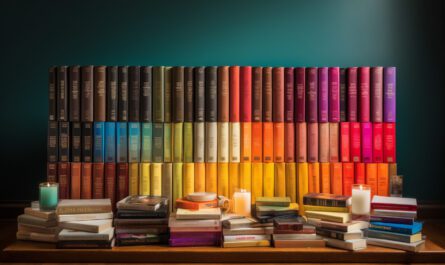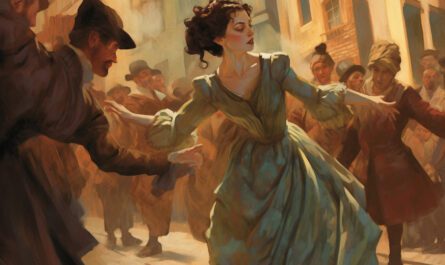Sound devices in poetry are one of the artistic means for creating images. Sound devices appeal to the reader’s audial imagination, making poems more real and vivid.
The main sound devices in poetry include alliteration, assonance, consonance, cacophony, and onomatopoeia. In this article, we will consider them all, along with appropriate examples from poems and songs.

Why do we need sound devices in poetry?
Authors use sound devices when they want to give their works a special touch and make them more musical. Sound devices are used in prose, but they are much more common in poetry. Due to the concise syntax of the poetic line, any sound play is especially noticeable.
Sound devices are an integral part of creating the right imagery for any type of poems. When used correctly, sound devices can make reading and reciting poetry more fun. They affect emotions with a special rhythm, various phonetic effects, and unexpected rhymes.
What are sound devices in English poetry?
Sound devices in English poetry are directly related to the peculiarities of English phonetics, the most important of which is the variety of pronunciation options for the same characters. The same letter or letter combination can produce different sounds; as a result, there are many more sounds in the English language than letters: 43 versus 26. So, keep in mind that in alliteration, assonance, and consonance it is the same sounds that are taken into account, not letters.
Now let’s take a closer look at the 5 most popular sound devices in poetry.
What is alliteration?
Alliteration is the repetition of the same sound at the beginning of two or more words in the same line. The term alliteration comes from the Latin “littera”, which literally means “a letter of the alphabet.”
In this sound device, the words starting with the same sound are euphonious with each other, so alliteration is also called the initial rhyme. This is an example of alliteration from Shakespeare’s “Romeo and Juliet”:
From forth the fatal loins of these two foes
And here is another one from Rudoy’s love poem “The Hearless Muse”:
Grabbing the gunned and guarded
Alliteration in poetry
In classical poetry, the meter is often key (for example, the aforementioned line from Romeo and Juliet is written in iambic pentameter). So, for alliteration to be harmonious, its repeating sounds must occur at the beginning of the stressed syllables even if they are not the word’s first. Consider this example of alliteration from James Thomson’s “The Castle of Indolence”:
Dragging the lazy languid line along.
This is also iambic pentameter, which forces the emphasis on the first syllable of “dragging”, and even though the “l” sound is not the first in the word “along”, the alliteration works because the initial “a” is an unstressed syllable.
The main functions of alliteration in poetry include:
- Alliteration draws the attention of readers or listeners to the sound of the phrase, not to its meaning.
- Alliteration allows the thematical linking of cornerstone words throughout the poem.
- Alliteration creates a specific mood.
- Although a wide range of words can be used for description, some sounds have certain inherent connotations, and repetition enhances this effect. For example, the sound “s” in the words “sea”, “silver” makes us pronounce them in a half-whisper and can give an atmosphere of mystery, solemnity, or intimacy, depending on the context. In contrast, “explosive” consonants such as “b” and “p” can inflate the tempo and make the text harsh to the ear.
- Alliteration gives the verse melody and rhythm, especially when reading aloud.
- The perfect rhyme is hard to find, so alliteration can be a good alternative for adding euphony to a verse.
Alliteration examples in poetry
Alliteration is one of the most popular sound devices in poetry. Many examples of alliteration were found in Old English. In the famous poem “The Raven” by Edgar Allan Poe, alliteration is widely represented:
Once upon a midnight dreary, while I pondered, weak and weary,
Over many a quaint and curious volume of forgotten lore,
While I nodded, nearly napping, suddenly there came a tapping.
In this passage, alliteration only pairs and groups words within each separate line. However, by using alliteration in successive lines Poe successfully sets the rhythm for the entire poem (which is quite lengthy):
Deep into that darkness peering, long I stood there wondering, fearing
Doubting, dreaming dreams no mortal ever dared to dream before.
Many examples of alliteration can be found in Samuel Taylor Coleridge’s “The Rime of the Ancient Mariner”:
The fair breeze blow, the white foam flew,
The furrow followed free;
We were the first that ever burst
Into that silent sea.
… and in Robert Frost’s “Birches”, where the crackling “cr” or rustling “sh” create a special atmosphere:
They click upon themselves
As the breeze rises, and turn many-colored
As the stir cracks and crazes their enamel.
Soon the sun’s warmth makes them shed crystal shells
Shattering and avalanching on the snow-crust—
Just to demonstrate how popular alliteration is among the sound devices in poetry, here are more examples of it:
I heard a fly buzz when I died;
The stillness round my form
Was like the stillness in the air
Between the heaves of storm…
Emily Dickinson, “I Heard a Fly Buzz When I Died”
The free bird thinks of another breeze
And the trade winds soft through the sighing trees
Maya Angelou, “The Caged Bird”
Note that the second line in the last example uses mirror alliteration: “t” “s” — “s” “t”.
What is assonance?
Assonance is a phonetic device whose essence is the repetition of the same vowel sounds in a line. The origin of the word “assonance” is Latin where “assonare” means “to sound.”
Usually (but not always) assonant vowels occur in the middle of words. At the same time, the letters that convey the same sounds can be different – it will still be assonance. As an example, let’s take a tongue twister that became a line from the musical “My Fair Lady”:
The rain in Spain stays mainly in the plain.
Assonance in poetry
The main function of assonance in poetry is to create rhythm. The repetitive stressed vowels make the phrase flow smoothly. This helps the listener to perceive the combination of words as a whole and memorize better them. This is why assonance is often used in proverbs, tongue twisters, and advertising slogans.
Assonance also helps to set the mood of the phrase. It is believed that long vowels slow down the tempo and add drama. In particular, the long sound [uː], reminiscent of the hooting of an owl, can be quite dark or eerie. Perhaps it is this sound in the word “moon” that creates a special atmosphere in poetry about the moon.
Short vowels, on the other hand, are usually more “lively” and lighter. Remembered that assonance, like other poetic sound devices, is good only within reasonable limits, and with excessive use, it can lose its power.
Assonance examples in poetry & songs
Let’s start with an assonance example from Robert Frost’s poem “Stopping By Woods on a Snowy Evening” (1922):
He gives his harness bells a shake
To ask if there is some mistake.
The only other sound’s the sweep
Of easy wind and downy flake.
The woods are lovely, dark and deep,
But I have promises to keep,
And miles to go before I sleep,
And miles to go before I sleep.”
Here, we see how the repetitive sounds in the middle of the lines complement the rhyming endings, heightening the tense atmosphere of the poem.
Edgar Alan Poe, a big proponent of sound devices in poetry, often used assonance in his works:
Once upon a midnight dreary, while I pondered, weak and weary,
Over many a quaint and curious volume of forgotten lore —
While I nodded, nearly napping, suddenly there came a tapping,
As of some one gently rapping, rapping at my chamber door.
“The Raven”, 1845
Here’s a line by Robert Louis Stevenson where the short “u” sounds evoke melancholy:
And from all around the haven the crumbling thunder of seas…
“The Feast of Famine”, 1890
Interestingly, crumbling thunder is also an example of onomatopoeia: a poetic sound device we’ll consider later.
We noted above that assonance helps make a phrase more memorable. Because of this, examples of assonance in poetry are often found in pop culture. Consider Rhianna’s “Diamonds”:
Shine bright like a diamond
//
We’re like diamonds in the sky
//
I saw the life inside your eyes
As you can see, here in different letter combinations the same vowel sound [ai] is transmitted.
In rap and hip-hop, assonance comes to the fore. In these musical genres, the “flow” of words, their rhythm and cadence are crucial. Therefore, the consonance of words prevails over strict rhyme.
Rap songs often contain a few imperfect inner rhymes based on assonance and other sound devices. Sometimes the singer emphasizes and exaggerates vowels to the point where the words sound like they’re actually rhyming.
Here’s an example from Eminem’s song “Lose Yourself”:
Oh, there goes Rabbit, he choked
He’s so mad, but he won’t give up that easy, no
He won’t have it, he knows his whole back’s to these ropes
It don’t matter, he’s dope.
What is consonance?
Consonance is a poetic sound device where the same consonant sounds are repeated at the end of a word or stressed syllable. This distinguishes consonance from alliteration where sounds are repeated at the beginning of words. Here is an example of consonance in poetry from Shakespeare’s “Sonnet 64”:
When I have seen the hungry ocean gain…
The word “consonance” comes from the Latin “consonantem”, which means “agreement in sound.”
Consonance in poetry
Poets often use consonance to make a phrase more interesting, to grab the attention of a listener, or to reinforce a syllable.
Consonance as part of the sound devices in poetry can also complement the rhyme, give the verse musicality, which is why it is popular among rap and hip-hop artists. Consonance is a key ingredient of the so-called “imperfect rhyme” where words sound similar but don’t actually rhyme.
Contrary to its nicknames, “imperfect rhyme” (or “lazy rhyme”) can produce rich and complex poetry. Poets using the consonance technique have a wider range of words in their arsenal, creating unexpected combinations.
Examples of consonance in poetry
Here is an example of consonance in poetry from “The Tyger” by William Blake:
Tyger Tyger, burning bright,
In the forests of the night;
We see how the repetition of the sounds “g”, “r” allows strengthening the poem’s rhythm in addition to its rhyme. In the next stanza, the sounds “t” and “d” seem to imitate the beating of the heart that the poet refers to:
And what shoulder, & what art,
Could twist the sinews of thy heart?
And when thy heart began to beat,
What dread hand? & what dread feet?
Another example of consonance in poetry can be found in Emily Dickinson’s “Poem 315”. Here, using the “l” sound creates that “imperfect rhyme”:
Your breath has time to straighten,
Your brain to bubble cool,
Deals one imperial thunderbolt
That scalps your naked soul.
In his famous poem “Annabelle Lee”, Edgar Poe also uses this poetic sound device. In the excerpt below, the consonance of “n”, “m”, and “l” create a rocking, lulling rhythm:
It was many and many a year ago,
In a kingdom by the sea,
That a maiden there lived whom you may know
By the name of Annabel Lee;
What is cacophony?
The word “cacophony” is formed by the fusion of the Greek words “κακός” – “bad” and “φωνή” – “sound”. Cacophony in literature occurs when the natural flow of writing is interrupted by harsh, “explosive” sounds that can alter the reader’s perception of the text. This is the opposite of euphony.
Cacophony in English poetry is achieved with such consonants as B, D, X, Q, Ch, C, T, P, K, and G. A phrase containing several words with these consonants is considered cacophonic. Usually, they go sequentially for a more vivid and memorable effect.
Cacophony in poetry
There are various reasons why a poet might resort to cacophony. Her purpose could be to convey a sense of haste, tension, or fear. This sound device is ideal when characters are scared, or going through a hectic experience.
Cacophony helps to depict:
- something oppressive or cruel (war);
- chaotic (city street or crowd of people);
- unpleasant noises (crackling, knocking, ringing);
- dark thoughts and feelings;
- fantastic phenomena (see example below).
Despite the fact that cacophony is a combination of consonants inconvenient for pronunciation, it can significantly improve the rhythm of a poem, giving it completeness.
An example of cacophony in poetry
An excellent example of cacophonic sound writing is the famous “Jabberwocky” by Lewis Carroll. The poem uses many non-existent and meaningless words:
Twas brillig, and the slithy toves
Did gyre and gimble in the wabe;
All mimsy were the borogoves,
And the mome raths outgrabe.
“Beware the Jabberwock, my son!
The jaws that bite, the claws that catch!
Beware the Jubjub bird, and shun
The frumious Bandersnatch!”
As we can see, the use of so many “plosive” consonants makes the poem anything but melodious, which is exactly what allows creating an atmosphere of uncertainty, danger, and trepidation.
What is onomatopoeia?
Onomatopeia is a Latin word, but its origin goes back to the ancient Greek “ὀνοματοποιΐα”, which means “word creation”. Sometimes onomatopoeia is used synonymously with reflection.
Usually, the sounds of words have nothing to do with their meaning. In the case of onomatopoeia, the opposite is true: words are consonant with what they mean. That is, the combination of sounds in a word imitates the natural sounds of an object or action.
Onomatopoeia in poetry
Onomatopeia is a phonetic device whose use in poetry is broader than the usual imitation of the sound. In addition to the well-known onomatopoeic words, onomatopoeia includes word strings that produce a sound effect together. Usually, onomatopoeia in poetry is used along with assonance, consonance, and alliteration. For example:
- The buzzing bee flew away.
- The sack fell into the river with a splash.
- The rustling leaves kept me awake.
The English language is replete with onomatopoeic words, from the barking of dogs to the sound of mechanisms: “bow-wow”, “moo”, “tick-tock”, “ding-dong” and many others. In poetry and literature, onomatopoeia is used to create vivid and understandable images without excessive verbosity.
Examples of onomatopoeia in poetry
Edgar Allan Poe, a master of sound devices in poetry, wrote poems with onomatopoeia, too. Here are lines from “The Bells”:
How they tinkle, tinkle, tinkle,
In the icy air of night!
***
How they clang, and clash, and roar!
What a horror they outpour.
In these examples, Poe showed us two opposite bells. At some point, they ring melodiously and softly – “tinkle”. Then the bells “clang”, “clash” and “roar” – a completely different sound with a stronger effect. Thus, the poet compares the bells with different moods. These onomatopoeia are both visual and audial, and easy to understand.
Here is an example of onomatopoeia from the poem “Morte d’Arthur” by Alfred Tennyson:
I heard the ripple washing in the reeds,
And the wild water lapping on the crag.
“Ripple” and “lapping” help the reader visualize and feel the stormy sea waves crashing against the rocks.
The next example is from the ballad “The Highwayman” by Alfred Noyes, which imitates the clatter of horse hooves:
Tlot-tlot; tlot-tlot! Had they heard it?
The horsehoofs ringing clear;
Tlot-tlot; tlot-tlot, in the distance?
Were they deaf that they did not hear?
And here is an extremely onomatopoeia-rich excerpt from Robert Browning’s “The Pied Piper of Hamelin”:
There was a rustling that seemed like a bustling
Of merry crowds justling at pitching and hustling ,
Small feet were pattering , wooden shoes clattering ,
Little hands clapping and little tongues chattering ,
And, like fowls in a farm-yard when barley is scattering …
It depicts young children running joyfully into the street. By using enthusiastic onomatopoeic words, Browning was able to capture the very essence of children’s excitement.
Onomatopoeia as a sound device is habitually found not only in poetry but also in music. Bobby Darin’s famous song “Splish Splash” imitate various sounds throughout its lyrics:
Splish, splash, I was takin ‘a bath
//
Bing, bang, I saw the whole gang
//
Flip, flop, they was doin ‘the bop
Conclusion
We examined the 5 key sound devices in poetry and what they are used for by considering their examples in poems and song lyrics. Sound devices play an important role in poetry, allowing the listener to better imagine what is happening and feel the atmosphere intended by the author. Sound devices also give the reader a stronger emotional connection with the text.
If you found this article useful, you may also be interested in learning how to write poetry.
What are you favorite sound devices in poetry? Do you know any unconventional ways of using them? Share your know-hows in the comments!




